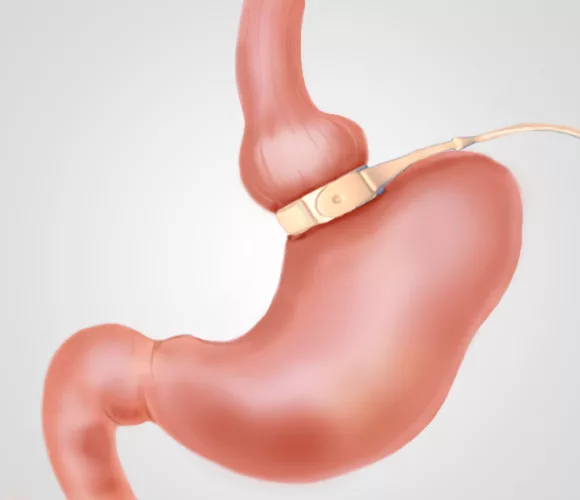Obesity and Metabolic Surgery
Gastric Band

Principle
This technique is carried out in special and exceptional circumstances. Very frequent 10 years ago, it is currently being replaced by sleeve gastrectomy and gastric bypass.
Gastric banding is a restrictive procedure.
An inflatable gastric band is placed in the upper part of the stomach, thus delimiting an upper gastric pouch of approximately 15 cc in volume. When food fills the pouch, it causes a sensation of rapid satiety which stops the food intake.
Features
The gastric banding is the only adjustable technique.
The gastric banding is connected by a small tube to an adjustment box placed under the skin.
This gastric banding can be tightened or loosened by injecting a liquid into the box, through the skin, under radiological control. The gastric banding can be removed during a new intervention in case of complication, inefficiency or on request of the patient.
How’s the Surgery going?
The operation is performed by laparoscopy (4 to 5 small skin incisions are necessary).
The duration of hospitalisation is around 24 hours after the operation.
Advantages
It is a simple, fast procedure associated with a low rate of complications.
There is no sectioning or resection. There is no change in the food path.
Expected Weight Loss
It is about 40 to 60% of excess weight, looking back over more than 10 years of results.
If the gastric banding is removed, weight regain is usual.
Vitamin & Nutritional Deficiencies
There are usually no nutritional deficiencies.
we help you achieve your weight-loss goals
The surgical management of obesity is based on 4 axes.
The surgical intervention, the preoperative and postoperative nutritional care, a preoperative and sometimes postoperative psychological assessment and follow-up, and a regular and sustained physical activity…
